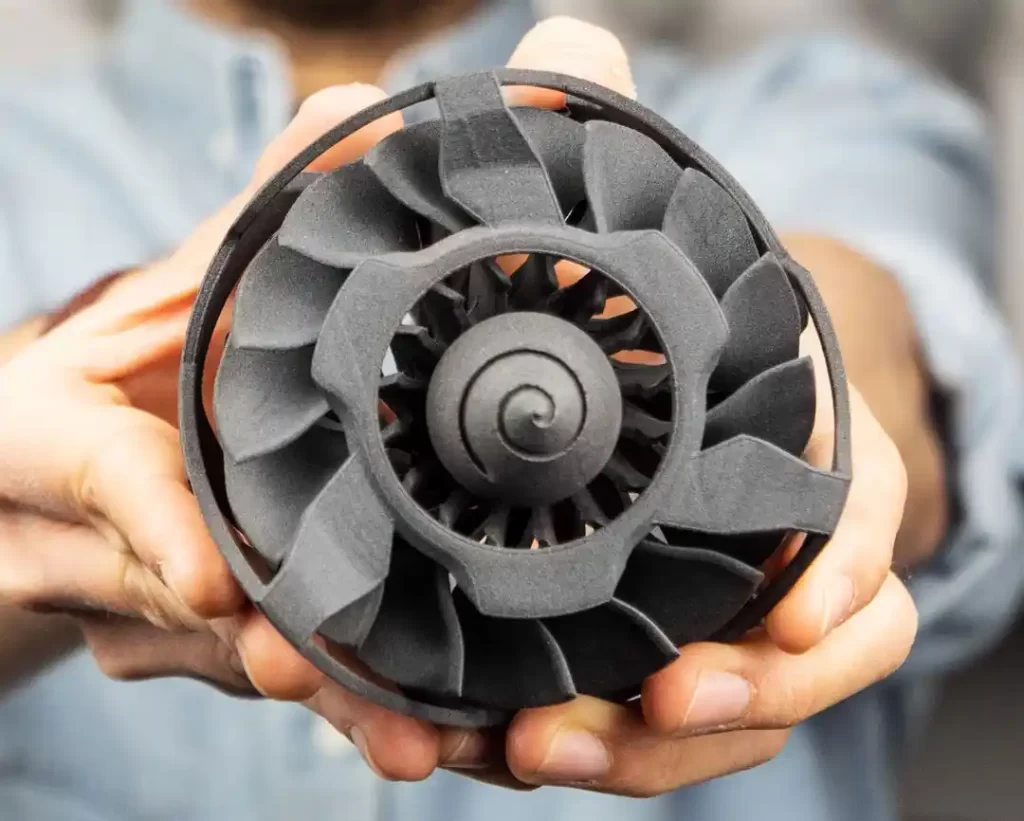If you’re a product designer or engineer, then you’re probably familiar with the various manufacturing methods used for prototyping and production. One of the most revolutionary methods to emerge in the past few decades is selective laser sintering (SLS). SLS offers capabilities that go beyond traditional manufacturing methods, providing opportunities for cost-effective, time-efficient, and custom manufacturing.
How Selective Laser Sintering Works
SLS is an additive manufacturing process that involves the use of a laser to sinter (heat and fuse) powdered materials into a solid 3D object. The process starts with a CAD (computer-aided design) model of the part to be made. The SLS machine then uses the CAD model to deposit a thin layer of powdered material onto a build platform. A high-powered laser is then used to selectively heat and melt the powdered material matching the 3D model.
Over time, the platform is lowered, and additional layers of material are applied and sintered. This process continues until the object is complete. Once the part is taken out of the printer, it undergoes some finishing processes to clean the excess powder from the surface and achieve the desired finish.

Applications of Selective Laser Sintering
SLS technology is used in many industries, from aerospace to automotive, medical, and consumer goods. Its benefits include the production of parts that are strong, durable, and functional. SLS technology is often used for prototyping and short-run production, but it is also increasingly being used for larger runs of parts.
The use of SLS technology results in unprecedented accuracy in the creation of complex shapes and geometries, as well as the production of intricate interior structures. It is capable of producing hollow parts as well as hybrid machine parts, made up of more than one material.

Advancements in SLS Technology
SLS technology has advanced significantly since its early days. While the first SLS machines were limited to printing parts made of nylon, modern machines can print using a variety of materials, including carbon fiber, glass fiber, ceramic, and industrial-grade metal materials like aluminum alloys and titanium.
The combination of SLS printing with other technologies such as metal injection molding (MIM) or CNC machining enables manufacturers to take advantage of the benefits of two or more technologies that are suitable for producing parts with particular design complexities and materials requirements. The implications of these advancements are significant, as they offer increased precision, flexibility, and cost-effectiveness.

Future of Selective Laser Sintering
The future of selective laser sintering is bright, with rapid advancements and continuous developments in materials and technology. The advancements in the materials used and the incorporation of more automated processes make SLS technology a more versatile and scalable option for manufacturing. In the future, we can expect partnerships, collaborations, or integration of SLS technology with other additive technologies and new inorganic materials.
Conclusion
Selective laser sintering is a game-changer for the manufacturing industry, providing limitless opportunities for product design, prototyping, and production. Its precision and accuracy in generating intricate designs, as well as the durability and robustness of the produced parts, set it apart from other manufacturing methods. Although SLS technology has its limitations, with time, it will remain a crucial part of the additive manufacturing and prototyping process.
FAQ
- What kind of materials can be used with SLS technology?
SLS can use a range of powdered materials that can fuse together. The most commonly used material is nylon, but other materials such as ceramics, metals, and glass-filled materials can also be used. - Is SLS printing expensive?
The cost depends on the size, complexity, and resolution of the object the printer will manufacture and the material it will use. Compared to other manufacturing methods for low volume production, SLS is relatively more economical. - How long does it take to print a part with SLS technology?
The time required for printing depends on the size, structure, and complexity of the part and the resolution required. The more complex or large, the longer it could take. - Is there a difference between SLS and SLA printing?
Yes, The main difference is in the way the objects are made. SLS produces 3D objects by fusing material powder together, while SLA printing forms objects by curing successive layers of liquid polymer with a laser or UV light. - Can SLS technology be used to print large-scale parts?
Yes, large-scale parts can be printed using SLS technology, but the maximum size of the part is limited based on the size of the build chamber of the printer.
